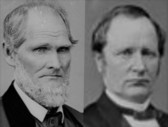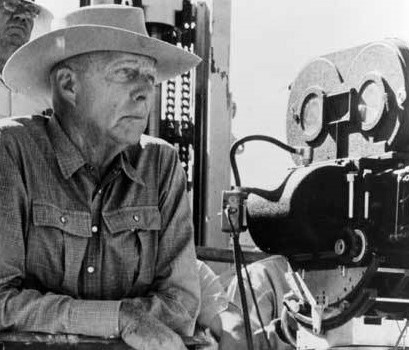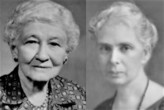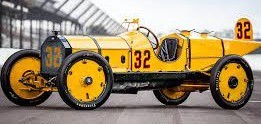May 30 – June 5The Week in Indiana History |
|||||||||||||||
“They’re moving pictures. Let’s make ’em move!” – – – Howard Hawks (1896-1977) With 47 films to his credit, Howard Hawks was one of the most respected directors in Hollywood.
Did You Know?   Hollywood is a long way from Indiana, but an impressive number of Hoosiers have found their way to California to establish careers as movie directors. In addition to Howard Hawks, the list includes Sydney Pollack, from Lafayette, whose hits include Out of Africa, Tootsie, and The Way We Were. Ray Enright, from Anderson, was a very busy director in the 1930s, turning out a score of movies, including China Clipper, Alibi Ike, and Golden Dawn. One of the biggest names on the silver screen was Robert Wise, from Winchester. His filmography practically defines the golden era of movies. His credits include The Day the Earth Stood Still, The Sand Pebbles, West Side Story, and The Sound of Music.   Perhaps the director most near and dear to the hearts of Indiana basketball fans is David Anspaugh, from Decatur. He has done a lot of work in television, including Hill Street Blues and Miami Vice. On the big screen, he won awards in 1993 for Rudy. But it was the picture he filmed in the small towns of Indiana in 1986 that will forever enshrine him in the Indiana Movie Hall of Fame. That was, of course, Hoosiers, which so well captures the spirit of high school basketball in Indiana. ANSWERS: 1. a/ Hickory   2. c/ Coach Dale 3. b/ Jimmy
|
|||||||||||||||




 1902   Howard Hawks was born in Goshen, Indiana. He moved with his family to California just as the motion picture industry was coming into its own. Beginning in silent films, he became known as a versatile director who was comfortable with all types of movies, from comedies to dramas to gangster films and westerns. Some of his most memorable work includes Red River, Sergeant York, Big Sky, and Gentlemen Prefer Blonds. Â
1902   Howard Hawks was born in Goshen, Indiana. He moved with his family to California just as the motion picture industry was coming into its own. Beginning in silent films, he became known as a versatile director who was comfortable with all types of movies, from comedies to dramas to gangster films and westerns. Some of his most memorable work includes Red River, Sergeant York, Big Sky, and Gentlemen Prefer Blonds.  

 1942   The first official order was issued from the new Camp Atterbury Training Center near Edinburgh. The facility was named for General William Wallace Atterbury from New Albany, Indiana. He had served as a staff member to General John G. Pershing in World War I.
1942   The first official order was issued from the new Camp Atterbury Training Center near Edinburgh. The facility was named for General William Wallace Atterbury from New Albany, Indiana. He had served as a staff member to General John G. Pershing in World War I. 1961   As Speedway drivers prepared to start the Indianapolis 500 Mile race, Ray Harroun, the first Indy 500 winner, drove around the track on the 50th anniversary of his victory. He was behind the wheel of the original yellow-and-black Marmon “Wasp” which had taken the checkered flag in 1911 at an average speed of 74.6 mph.
1961   As Speedway drivers prepared to start the Indianapolis 500 Mile race, Ray Harroun, the first Indy 500 winner, drove around the track on the 50th anniversary of his victory. He was behind the wheel of the original yellow-and-black Marmon “Wasp” which had taken the checkered flag in 1911 at an average speed of 74.6 mph.




